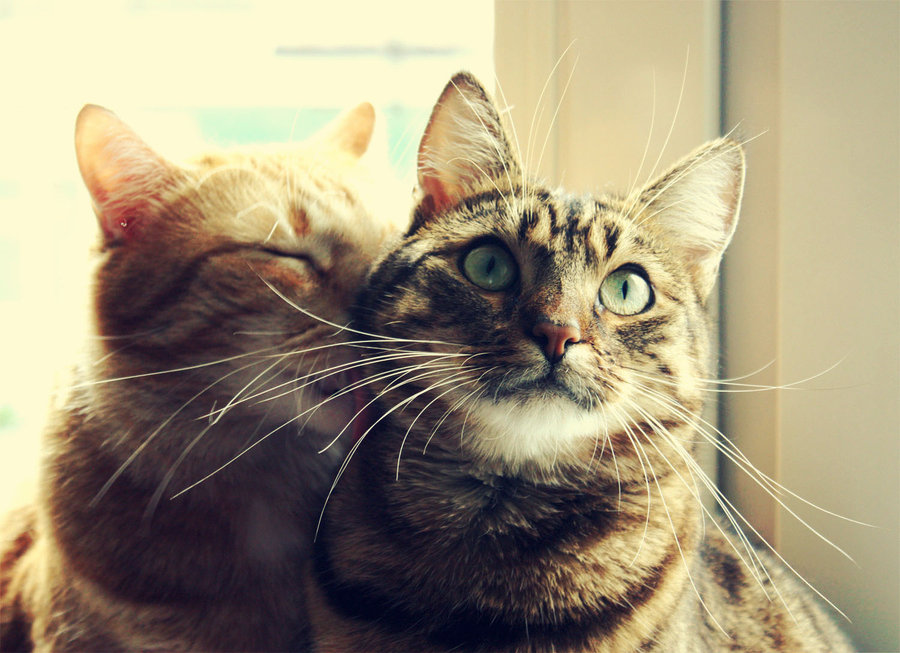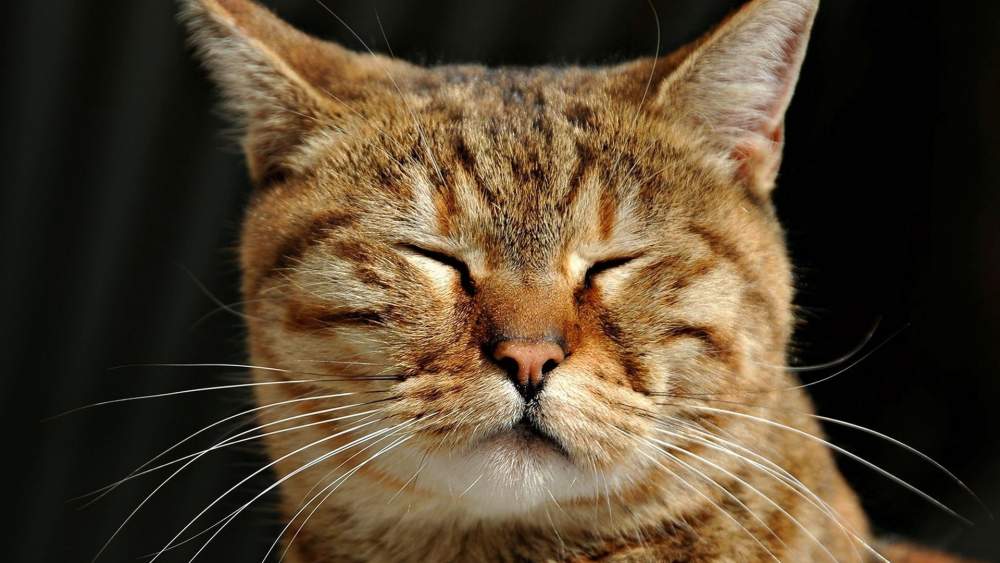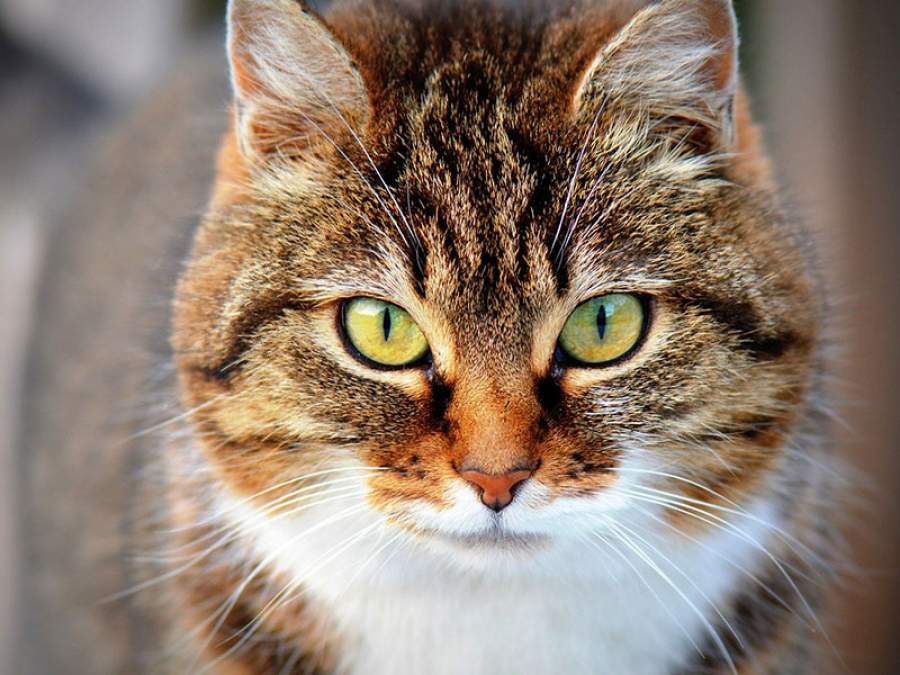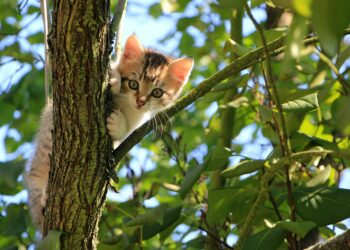When you own a cat, you want to be as close as possible to your animal and often, we have the impression that he is communicating with us. This is no coincidence because there really is a cat language! You’ve probably already noticed that, depending on the circumstances, your cat behaves differently.
The Cat Language
He will purr on your lap when you are resting on your sofa, or if he is hungry, he will not hesitate to let you know by giving you a few meows. When you get home he sneaks between your legs and hugs them with his tail and when you are in the same room but two different places he blinks peacefully. These are all signs that the cat has its own language, let’s learn to decipher the most common of them.
Purring cat
We cat owners are familiar with the gentle purrs of our furballs. Indeed, it is difficult to imagine a cat that does not purr! Cat purring appears at the age of two days in cats and is initially limited to the relationship between the mother and her litter. However, the cat also uses purring to communicate with humans.
The exact mechanism of the purr is still not well explained. Among the theories advanced, the most common would involve contractions of the muscles of the larynx following a neural oscillation. This would result in vibrating the vocal cords and therefore, our little felines, to purr.
The purr of the cat is unique in that it is emitted on inspiration as well as on expiration.
Reading suggestions; How To Recognize And Maintain A Happy Cat?
It is often associated with moments of well-being or pleasure for the cat, for example, if he is being petted or cuddled, or if he likes the contents of his bowl.
However, it is good to know that a cat in pain or a frightened cat can also resort to purring for reassurance. The purring of the cat is therefore not systematically synonymous with well-being even if we admit it, on a daily basis, the situations which trigger them are most often positive.
In summary :
- Purring in cats allows them to communicate.
- In general, purring is a sign of well-being or pleasure.
- The cat meows relatively little when not in the presence of humans and generally does not use the meow to communicate with other cats, except in hot weather. Indeed, in its natural environment, the cat uses meowing only on certain specific occasions:
- The cat or the cat is trying to mate: in this case, the meows are loud, long and their tone is modulated.
- The cat hunts: when it sees prey that it cannot reach, such as a bird passing in front of the window, the meowing is very light, jerky, the cat snaps its jaws, or its whiskers quiver. Sometimes the purring betrays pain or fear.
Cat meow
Another part of cat language is the cat’s meow. Some cats are louder than others. For example, the Siamese is known to be particularly talkative! Obviously, it also depends on the personality of each cat.
As a domestic animal, the cat is often in contact with humans. It is particularly interesting that the cat has learned to use meow as a privileged means of communication with humans, especially with its owner.
Each cat emits its own meows to the address of its owner. To do this, he uses a register that is specific to him and which varies according to the circumstances. Some studies denote up to ten different vocalizations. For example, your cat will know very well how to make a specific meow to ask for food, and another to indicate that it is in pain somewhere.
This register is specific to each individual and to the relationship he maintains with his master. So it’s no wonder that you immediately understand what your cat is telling you when people outside your household wouldn’t care more than that.
In summary :
- Meowing is little used by non-domesticated cats.
- In the domesticated cat, meowing is used to communicate with its owner.
- The cat knows how to adapt its meows to circumstances or to signal a need.
Cat licking face
We can sometimes be surprised by a cat who licks the face of its owner. However, unless you have just eaten food that your cat really wants to smell, it may just be another element of the cat’s speech.
Indeed, by licking you, it is first of all possible that your cat tries to get closer to your scent and to deposit his scent on you. He thus marks his territory in a way, and thus signifies to you that you are his human!
Reading suggestions; 200+ Unique Female Cat Names for Your Cute Companion
It is also good to know that between them cats use licking as a means of communication. Indeed, from birth, the mother licks her young. In addition, they show their affection, make peace or invite each other to play by licking each other.
- It is also interesting to note that not all cats lick all cats, however. Indeed, they will tend to lick cats that they have identified as dominant.
- The domestic cat has a privileged relationship with its owner in whom it sees a fellow creature (certainly much larger and certainly less hairy). If your cat licks you, it simply means that he recognizes you as one of his own.
- Finally, a cat that licks you is a cat that loves you. He shows you his affection in this way and indicates, as with purring, that he is comfortable by your side and that he feels good. It is a real mark of trust and respect.
 In summary :
In summary : - Cats use licking to communicate with each other.
- If your cat licks you, it indicates that it accepts you as one of its own.
- A cat licking your face shows you the love and respect it has for you.
Cat Closing Eyes
You have often found that your cat is staring at you, then closes her eyes for a while, but does not doze off.
The cat, although domesticated, is nonetheless a hunter and a predator. In nature, it is on the lookout, always in search of prey or on the lookout for any danger or competitor that could come to harm its peace or cross its territory. This is why by nature, the cat is not an animal that blinks a lot.
 A cat that gently closes its eyes in your presence shows you its trust and love. It’s his way of telling you that he loves you.
A cat that gently closes its eyes in your presence shows you its trust and love. It’s his way of telling you that he loves you.
When that happens, feel free to give him a slow blink of your eyes to show him, in his own way, that the bond between you is two-way and that you have as much affection for him as he does. gives some.
In summary :
Roaring cat
Some frightened cats hiss and make a noise reminiscent of spitting. Often, this growling is accompanied by other physical signs: the ears are prone, the back is rounded, the hair is bristling, the tail is bushy, etc.
If you’re dealing with a hissing cat, that’s not a very good sign.
Indeed, the growling in the cat reflects fear or an impression of being threatened. Sometimes something will remind him of a bad experience and trigger the growl without those present knowing exactly how to identify the cause.
In other cases, the growling appears when the cat is sick or injured.
The growling is often indicative of the cat’s aggressive behavior. In the event of a cat that hisses, however, you should keep calm and leave the cat alone at first. The cat will come back to you once it feels safe again.
Note, however, that if the growling occurs frequently in your cat, it should be taken to the vet or a cat behavior professional.
In summary :
The cat has many ways of communicating with us. Among other things, he does it by purring tenderly in our ears, by welcoming us with a very soft meow, by giving us a few taste buds with his rough tongue, or even by lovingly blinking his eyes.
These elements of the language of the cat are just as many marks of affection and communication. In some cases, for example, when dealing with a hissing cat, fear and aggression are reported. To best meet the needs of your furball and to build an exceptional bond with it, it is important to know how to identify the cat’s language and yours in particular.



 In summary :
In summary : A cat that gently closes its eyes in your presence shows you its trust and love. It’s his way of telling you that he loves you.
A cat that gently closes its eyes in your presence shows you its trust and love. It’s his way of telling you that he loves you.





